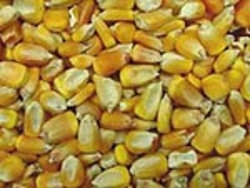Aflatoxin and Liver Cancer
Aflatoxin and Liver Cancer
Aflatoxin is a naturally occurring toxin produced by mold. For almost four decades, NIEHS-funded scientists have conducted research on the role of aflatoxin in promoting liver cancer. Their discovery of the genetic changes that result from aflatoxin exposure have led to a better understanding of the link between aflatoxin and cancer risk in humans. These discoveries are also being used in developing cancer prevention strategies
Aflatoxin exposure occurs primarily through the diet. Aflatoxins grow on whole grains such as corn, rice, and wheat, as well as on peanuts, almonds, walnuts, sunflower seeds, and such spices as black pepper and coriander. Aflatoxins can contaminate these food products during processing, storage, or transport when conditions are favorable for mold growth.
NIEHS-funded scientists at the Massachusetts Institute of Technology were among the first to show that exposure to aflatoxin can lead to liver cancer. Their research also demonstrated that aflatoxin’s cancer-causing potential is due to its ability to produce altered forms of DNA called adducts. Researchers now use the levels of these DNA adducts in blood and urine as sensitive biomarkers of aflatoxin exposure in humans.
NIEHS-funded researchers at The Johns Hopkins University School of Public Health have applied these exposure biomarkers to study of the interaction between exposure to the hepatitis B virus and Aflatoxin in promoting the development of liver cancer. Their data show that when people who test positive for the hepatitis B virus are also exposed to aflatoxin in the diet, their risk for developing liver cancer is about 60 times that of unexposed individuals. This increase in cancer risk is much greater than that observed with either aflatoxin or hepatitis B virus alone.
The Johns Hopkins University researchers are also the first to test the effectiveness of chlorophyllin, a derivative of chlorophyll that is used as an over-the-counter dietary supplement and food colorant, in reducing the risk of liver cancer in aflatoxin-exposed individuals. Studies conducted in Qidong, People’s Republic of China, showed that consumption of chlorophyllin at each meal resulted in a 55% reduction in the urinary levels of aflatoxin-related DNA adducts. The researchers believe that chlorophyllin reduces aflatoxin levels by blocking the absorption of the compound into the gastrointestinal tract. The results suggest that taking chlorophyllin, or eating green vegetables that are rich in chlorophyllin, may be a practical and cost-effective way of reducing liver cancers in areas where aflatoxin exposures are high.
In an effort to identify the genetic underpinnings of liver cancer, the Johns Hopkins University team has discovered mutations in a critical cancer gene, known as p53, in the serum of individuals who later were diagnosed with the disease. This discovery may eventually lead to new strategies for the detection, prevention, and treatment of liver disease in susceptible individuals.
